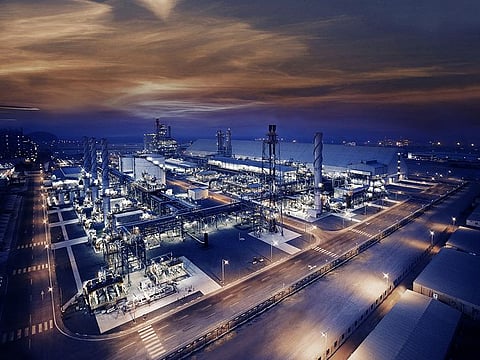Abu Dhabi’s TA’ZIZ in shareholder agreement with Fertiglobe, others on 1 million ton a year low-carbon ammonia facility
Planned 1 million tonne a year facility will bring TA’ZIZ, Fertiglobe, Mitsui, GS Energy

Dubai: The Abu Dhabi Chemicals Derivatives Company (or TA’ZIZ) has lined up a shareholder agreement with ADX-listed Fertiglobe, GS Energy Corporation and Mitsui & Co., Ltd. for a potential 1 million ton per annum low-carbon ammonia production facility. This will be at the TA’ZIZ Industrial Chemicals Zone.
The shareholder agreement is seen as the next step in the project’s ‘journey towards a final investment decision’ (FID). “This is a significant milestone in the development of our low-carbon ammonia business and further strengthens the UAE’s hydrogen value proposition,” said Khaleefa Yousef Al Mheiri, TA’ZIZ acting CEO.
“We are building on the collective strengths of our partners and shareholders to develop the first-of-its-kind large-scale low-carbon ammonia project in the Middle East and North Africa.
The facility will help ‘reinforce Abu Dhabi’s position as a leader in low-carbon fuels’ and ‘capitalize on the growing demand for low-carbon ammonia as carrier fuel for clean hydrogen’.
The new deal also builds on ADNOC’s deep experience in carbon capture, utilization and storage (CCUS), Fertiglobe’s ammonia capabilities, and Mitsui and GS Energy’s leading roles in industrial decarbonization.
This follows several agreements signed by ADNOC to explore hydrogen supply opportunities with customers in key demand centers including the Ministry of Economy, Trade and Industry of Japan, Japan’s Mitsui and Korea’s GS Energy.
TA’ZIZ Industrial takes shape
The shareholder agreement highlights the international investor interest in TA’ZIZ and closely follows ADNOC and Fertiglobe’s sales of low-carbon ammonia demonstration cargos to customers in Japan, Korea and Germany.
Low-carbon ammonia is made from hydrogen derived from natural gas feedstock and nitrogen, with the carbon dioxide produced captured and stored. Ammonia can be used as a low-carbon fuel for applications, including transportation and power generation and in industries, such as steel, cement and fertilizers.
Sign up for the Daily Briefing
Get the latest news and updates straight to your inbox


